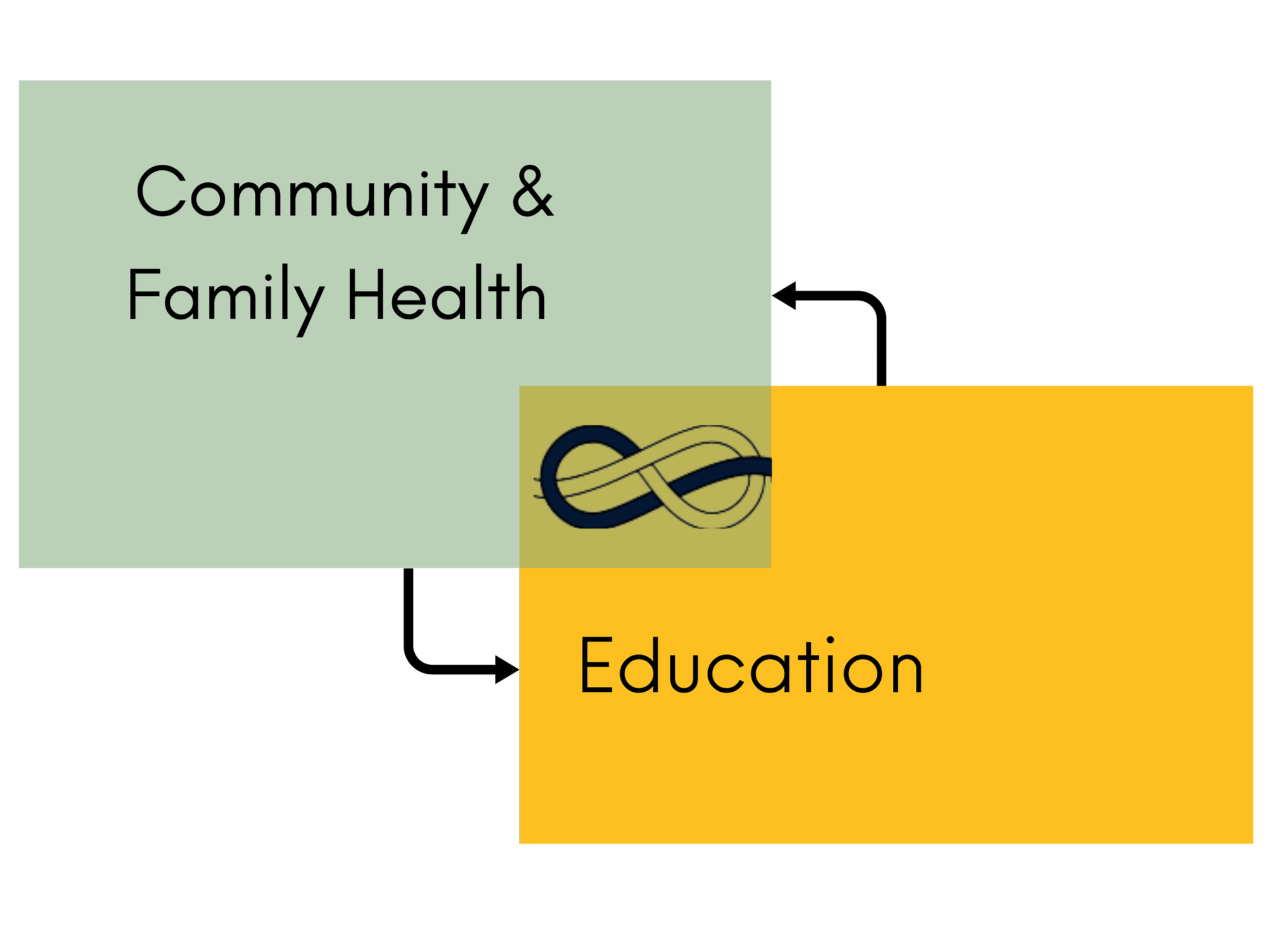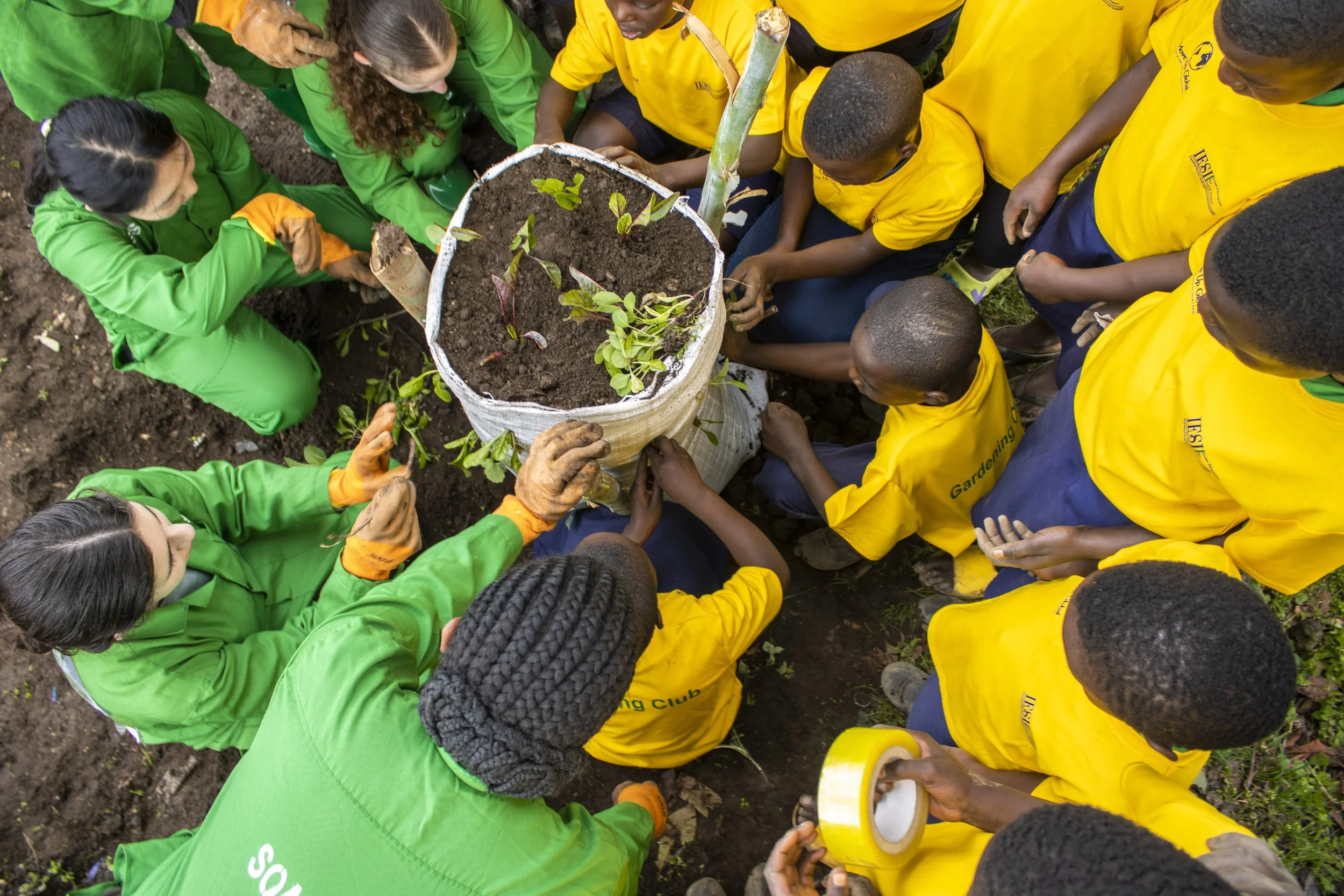
Applied Health Model
The Knot Framework
In many rural and hard-to-reach communities, schools are more than places of learning—they are powerful centers of community life. At Move Up Global, we believe that every school can become a hub for sparking change and improving both health and educational outcomes.
Yet, in many areas, the disconnect between schools and local health systems leaves children and families without timely care. Our Ipfundo (The Knot) framework was created to bridge that gap—linking classrooms, community health workers, and local health facilities into one united system of care.
In Rwanda, where public schools often have no health worker, teachers are the first to notice signs of illness, malnutrition, or neglect. To strengthen this vital frontline, Move Up Global orients and deploys community health workers to be stationed at schools, working alongside teachers. Together, they screen children for common illnesses, ensure early management, and coordinate referrals to nearby health centers.
By equipping schools and health facilities to collaborate in this way, we help transform them into centers of healing, learning, and resilience. Regardless of their background or profession, our partners, teachers, parents, and health workers form an extended public health workforce tackling neglected tropical diseases, malnutrition, and other poverty-related conditions.
Together, we are weaving a stronger knot—one that binds education, health, and hope for generations to come.
The Health Passport: Learning for Life
In many underserved communities, children and families lack access to basic health information and resources. Without this knowledge, preventable illnesses go unnoticed, care is delayed, and the cycle of poor health continues from one generation to the next.
Move Up Global’s Health Passport is changing that. This innovative workbook brings continuous health education into classrooms—empowering children to learn, track, and apply essential health skills every day. Each child uses a personalized passport throughout the school year to build knowledge, monitor progress, and share what they learn with their families. The Health Passport is reviewed regularly by community health workers, who assess children’s understanding and application of key health messages while affirming their learning journey and growth.
Together, we’re transforming classrooms into spaces of learning, health, and hope—empowering every child to thrive.
Learn more about Move Up Global’s Health Passport →
Transforming Schools into Hubs of Health and Hope
In rural low-resource settings, schools are often overcrowded and under-resourced, making it difficult for teachers and students to thrive. Despite their commitment, schools often struggle to implement government-mandated improvements that ensure quality education for all.
Move Up Global works with local communities to change that reality. We introduce student-centered learning models that make classrooms more engaging, inclusive, and effective. But we know that children cannot learn if they are unwell, hungry, or neglected—so we go further.
By linking education and health, we help schools become hubs for both learning and well-being. Our programs integrate health interventions that empower students to take charge of their own health and to share that knowledge with their families and communities.
When schools become places where both minds and bodies are nurtured, entire communities are strengthened. As we leverage the school as a center for child and family health, we see transformation that reaches far beyond the classroom—creating healthier, more resilient communities with the power to sustain lasting change.
School-based health agents serve as an interface between schools, families, and health facilities. They meet with individual family members to develop a health plan which can vary depending on the situation. In some cases, the plan would be to provide direct counselling to affected students families or reaching out to a local community health worker to ensure a close follow up. They also help with facilitating a referral to the nearest health facility.
Prevention of Neglected Tropical Diseases
No child should miss school because of a disease that costs less than a dollar to prevent. Yet intestinal parasites—spread through unsafe water and poor sanitation—continue to steal the health, energy, and dreams of millions of children. At Move Up Global, we’re breaking this cycle by delivering simple, life-changing prevention and treatment right where children learn and grow. Together, we’re ensuring that every child has the chance to learn, thrive, and shape a healthier future. Learn more about our water filtration project in rural Rwanda.
Joint Planning and Coordination
We believe lasting change happens when schools, families, and health systems work together. Move Up Global fosters joint planning and coordination of health promotion sessions that bring students, teachers, parents, and public health workers to the same table. Together, they design and implement a shared agenda for health education and disease prevention.
These planning efforts are guided by real data—from national health information systems, local epidemiological surveillance, and students’ health records—to ensure that interventions respond to actual community needs. Once priorities are identified, school and health facility leaders form a joint task force to coordinate and track progress. Throughout implementation, local and district health and education units play an active advisory role, reinforcing collaboration and accountability at every level.
Where Mountains Stand, Communities Rise
On rugged, hilly terrain scattered with rocks, our community near Volcanoes National Park refused to be discouraged. Instead of seeing obstacles, they saw a challenge. With bare hands, tools, and unshakable spirit, they transformed rough ground into a soccer field. They didn’t wait for perfect conditions. They created their own.
This field is proof that when a community believes in itself, no mountain is too high, no stone too heavy. Imagine what more we can achieve with support, encouragement, and shared vision.
Stand with this spirit of determination. Together, we can help community dreams take root and grow strong.




